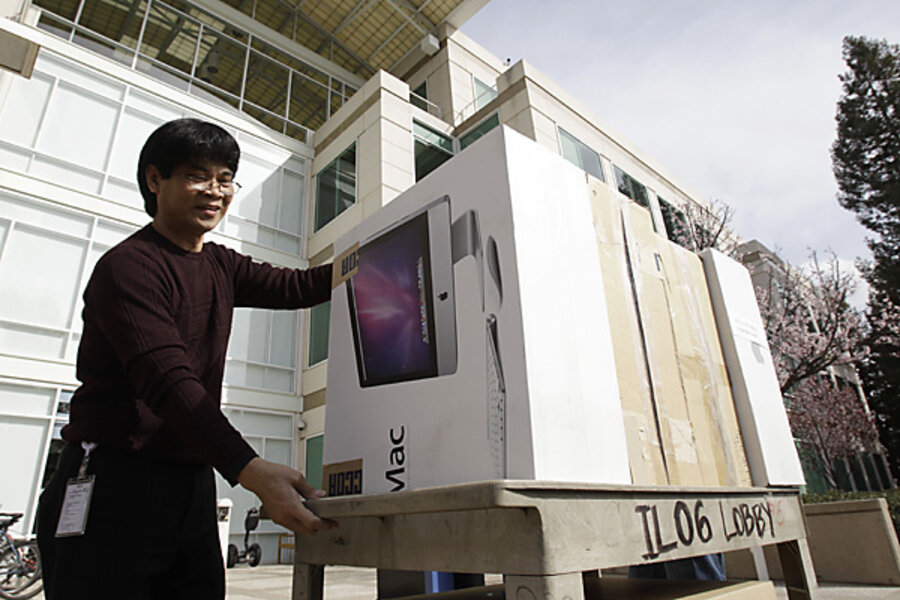Ease corporate tax by hitting up shareholders
Loading...
While there seems to be growing agreement in Washington that the U.S. needs to cut its tax rate on corporations, there is (surprise) no consensus at all on how to pay for this. One way: Raise taxes on capital gains and dividends.
This idea was one element of the broad tax reforms proposed last year by the chairs of President Obama’s deficit reduction commission, Alan Simpson and Erskine Bowles, and by the Bipartisan Policy Center’s deficit panel, chaired by Alice Rivlin and Pete Domenici. Both panels relied in part on analysis in a paper by my Tax Policy Center colleagues Eric Toder, Ben Harris, and Rosanne Altshuler. The plan has so far received little attention. It deserves more.
The plan would tax dividends and long-term capital gains at ordinary income rates, with a maximum rate on gains of 28 percent–compared to 15 percent today–and use the revenue to cut corporate tax rates. Those of you with long memories may remember these investment rates were the law back in 1997.
Eric, Ben, and Rosanne figure the revenue this idea would generate would allow Congress to cut the corporate rate from 35 percent to about 26 percent, assuming corporations and investors do not change behavior (by, say, reducing dividend payments). Since they almost certainly will adjust, a redesign would probably buy less of a rate cut. At a roundtable last Friday sponsored by Tax Analysts, Congressional Research Service economist Jane Gravelle suggested it might get rates down to just 30 or 31 percent. Still, that ain’t nothing.
Here’s a bit of background to help explain what this is all about: Economists believe that all income should be taxed once but only once. By that standard, the current taxation of corporations is a mess. In theory, corporate income is double-taxed—once at the firm level and again when income is distributed to shareholders through dividends or capital gains. In reality, some is taxed repeatedly while some is not taxed at all.
To avoid this, many economists have argued for a fully integrated system where corporate income is paid either entirely at the business level or fully by shareholders. In fact, the vast majority of U.S. firms already do this by organizing themselves as pass-through entities such as S corporations and partnerships. In this model, owners pay tax on their individual returns but their business is not taxed at all.
Matters are much more complicated for other corporations, however. Some profits are double-taxed. But others are never taxed at the business level, largely thanks to the ability of multinationals to shift income to low-tax countries and deductible expenses to the U.S. Worse, in that environment, high corporate rates discourage investment in the U.S.
Similarly, foreign investors and tax-exempt shareholders (such as pensions) pay no tax on a big chunk of corporate profits. Another slug of capital gains goes untaxed because investors die and their unrealized gains pass tax-free to their heirs.
The challenge in this environment is to figure out how to reduce the corporate rate so it is competitive with the rest of the world, make sure that profits are somehow taxed, and not increase the deficit by tens of billions of dollars annually. The Congressional Budget Office figures that over the next decade corporations will pay about $400 billion-a-year in income taxes.
That brings us to the option of raising taxes on investors. Shifting some taxes on corporate profits from firms to shareholders has some obvious advantages. The biggest may be that it would reduce those disincentives for companies to invest at home. A tax on shareholders is based on where they live, rather than where their profits are earned. Thus, a lower corporate tax and a higher shareholder tax may, on balance, help keep investment in the U.S.
The TPC paper also figures it would be more progressive than the current regime. Since some share of corporate taxes is paid by workers (just how much is a matter of theological debate among economists), lowering the corporate rate would raise their after-tax earnings. At the same time, TPC figures 70 percent of the higher individual investment taxes would be paid by the top one percent of earners.
There are lots of issues to sort out with such a shift. But it is certainly worth considering.
Add/view comments on this post.
------------------------------
The Christian Science Monitor has assembled a diverse group of the best economy-related bloggers out there. Our guest bloggers are not employed or directed by the Monitor and the views expressed are the bloggers' own, as is responsibility for the content of their blogs. To contact us about a blogger, click here. To add or view a comment on a guest blog, please go to the blogger's own site by clicking on the link above.





